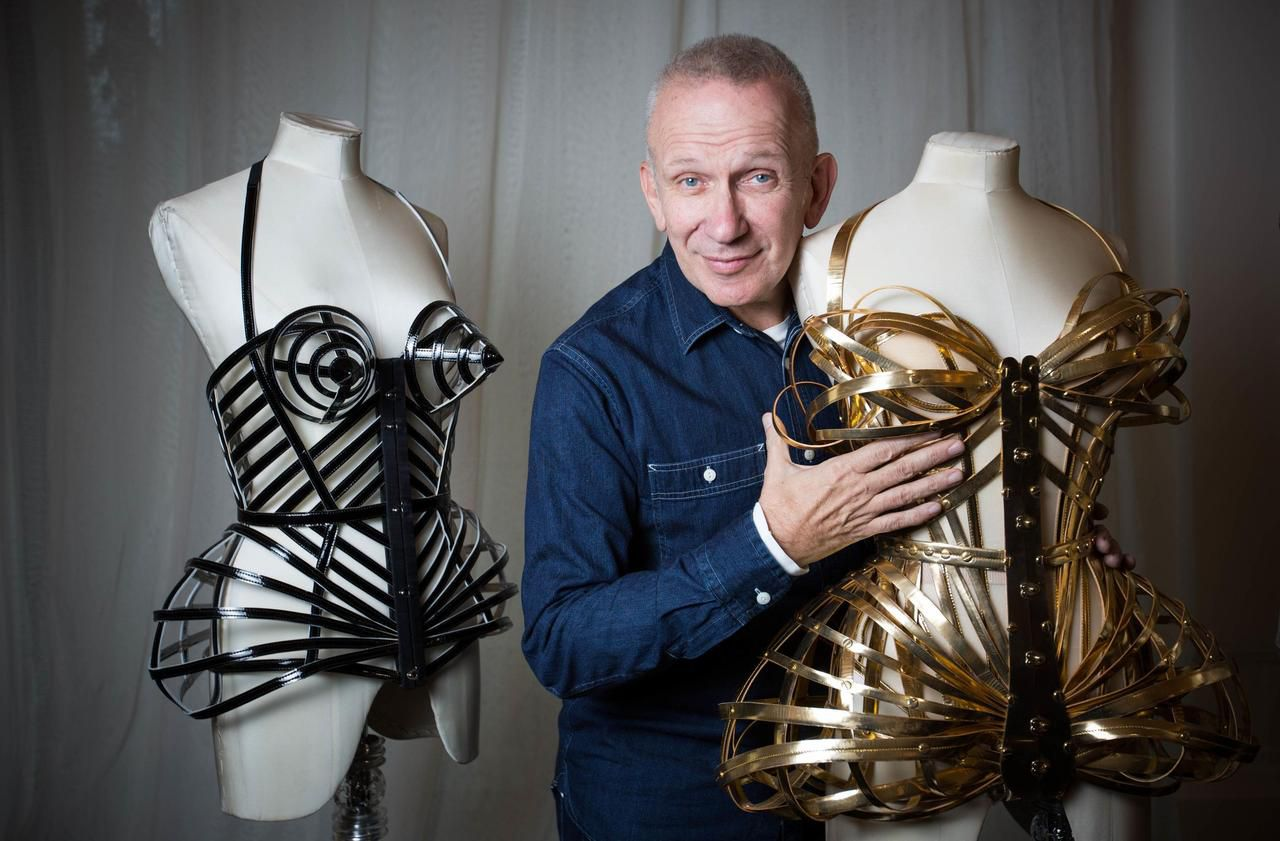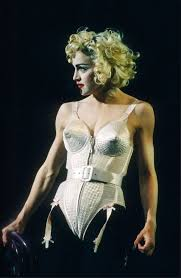Jean Paul Gaultier
Born in 1952

Jean-Paul Gaultier, often referred to as fashion's "enfant terrible," revolutionized the industry with his irreverent approach to design and his challenge to traditional gender roles in fashion. Without any formal training, he began his career by sending sketches to famous couture stylists at a young age. Pierre Cardin was impressed by his talent and hired him as an assistant in 1970.
After working for Jacques Esterel and Jean Patou, he launched his own collection in 1976. Gaultier quickly gained attention for his provocative collections that challenged conventional fashion norms. He became known for reinterpreting traditional clothing items: corsets became outerwear, men wore skirts, and marinière (sailor stripes) became a haute couture staple.
His most famous collaboration was with Madonna, creating her iconic cone bra for the 1990 Blond Ambition tour. This design became one of fashion's most memorable moments and solidified his status as a cultural icon. Throughout his career, Gaultier has consistently pushed boundaries, mixing street style with haute couture and challenging gender stereotypes in fashion.
Beyond fashion, Gaultier has designed costumes for films like "The Fifth Element" and "The City of Lost Children." He launched successful perfumes, including the distinctive bottle designs that echo the human form. In 2020, he retired from ready-to-wear and haute couture runway shows, but continues to influence fashion through collaborations and special projects. His legacy is one of breaking conventions, celebrating diversity, and bringing humor and irreverence to haute couture.
CRÉATIONS ICONIQUES
Des designs révolutionnaires qui ont défié les conventions et redéfini les frontières entre la mode et l'art.
The Cone Bra (1990)

Rendu célèbre par Madonna lors de sa tournée Blond Ambition, ce design révolutionnaire a transformé le corset en vêtement d'extérieur et est devenu un symbole d'émancipation féminine.
Le Male Fragrance Bottle (1995)

The iconic male torso-shaped bottle design for his first men's fragrance, showcasing Gaultier's signature sailor style and revolutionary approach to packaging.
Un impact durable
Jean Paul Gaultier a redéfini les codes de la mode en brouillant les frontières entre les genres et en célébrant la diversité bien avant que ces concepts ne deviennent des mouvements culturels majeurs.
Son approche inclusive et son refus des conventions ont ouvert la voie à une nouvelle génération de créateurs qui considèrent la mode comme un moyen d'expression personnelle et politique. Son influence s'étend au-delà de la mode, touchant la musique, le cinéma et l'art contemporain.
"Pour moi, la beauté est dans la différence."